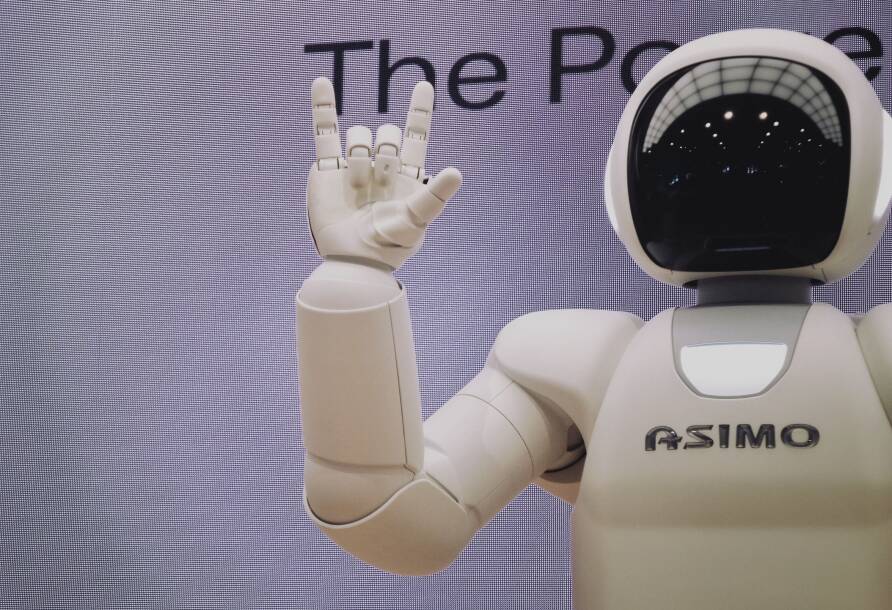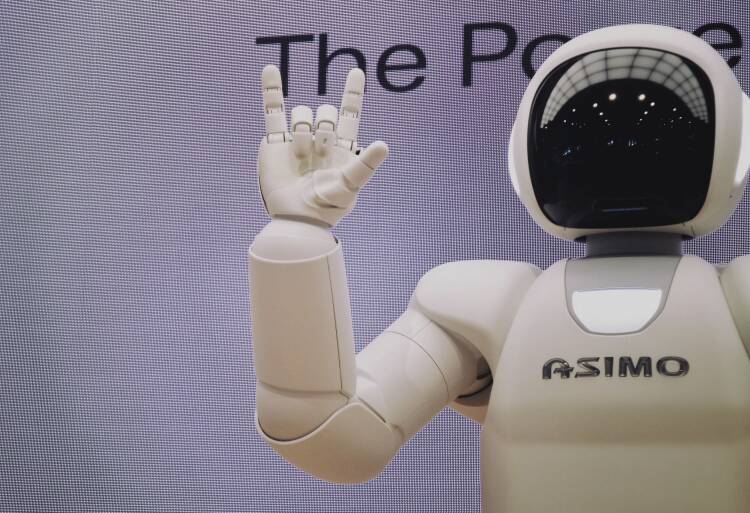

Definition of Robotics
Robotics is the branch of mechatronics that studies the theoretical consequences and practical applications of robots in the broadest sense. A well-designed robot can perform predetermined tasks. Robotics covers various types of robots, including reactive robots, real-time robots, cognitive robots, and evolutionary robots.
With great power, comes great responsibility. One of the things food services, food retail, and hospitality need to prioritize more is data security. The more hospitality businesses know about and ask their customers, the more carefully they must manage their privacy.
Staff shortages are forcing change. It is very difficult to find sufficient personnel in food services and hospitality. In the coming years, as many repetitive tasks as possible will be taken over by robots. This will save money, reduce waste, and solve the issue or simply not being able to find staff to hire.
The expectation is that in global food production – a traditionally labor-intensive sector – 90% of tasks can be automated. Think, for example, of self-cleaning agricultural equipment and factory components, which reduces downtime and prevents cross-contamination. Or, machine learning sorting machines that use optical sensors to get products to their final destination at high speed. For example, sorting potatoes for frying, mashing, retail sales, etc.
Definition of Machine Learning (ML)
An AI system that makes predictions based on instructions from a human teacher. The system is built in such a way that it can automatically update its knowledge and procedures to improve its predictions based on new data, without having to be explicitly programmed to do so. Machine learning is used for web searches, ad placements, credit ratings, fraud detection, stock market trading, and many other applications.
Definition of Artificial Intelligence (AI)
Artificial Intelligence (AI) is a sub-discipline of computer science that explores how computers and machines can simulate human intelligence, while remaining human-like rather than actually becoming human. AI enables computer systems to perform tasks which normally require human intelligence. For example: looking, recognizing speech, making decisions, and translating from one language to another.
Implications & applications:
AI is everywhere. The snowball that is the Internet of Things (IoT) and the Internet of Food (IoF) just keeps on rolling and growing exponentially.
Coolers that communicate with suppliers, consumer wearables that communicate with restaurant reservation systems.
Systems that measure, learn but also share data and increase transparency, can play a major part in helping people accept robotization and data in food. For one thing, they are perfectly suited to the consumer’s desire to determine exactly when, where, and how they want their food.
Screenless apps and devices will develop rapidly. The market for speech-operated apps and devices is still relatively untapped, so businesses entering the market early will be able to quickly stake out a large market share.
Anxiety is justified. AI, ML, and robots are only as good as the people who design them. It’s not up to the machine, it’s up to us. In the near future we will probably view these new tools and technologies as unremarkable. Just like today’s new generations take the internet for granted.
© Michiel Ton
AI, ML, and robotization can help to solve or expedite challenges relating to healthy living and global population growth. The benefits of AI, ML, and robotization for food include more continuous, effective and efficient monitoring as well as improved and more precise traceability. This applies equally to the production (agriculture), distribution (wholesale), and consumption (hospitality and in the home) of food.
Editorial
3 min
Smart agricultur, microsensors, automated restaurants, face recognition
Frank Lindner & Joost Scholten Sander van der Meij
The world of food is on the cusp of being inundated by a wave of artificial intelligence (AI), machine learning (ML), and robotization. Think, for instance, or smart agricultural crops utilizing microsensors, automated restaurants using face recognition, and an AI dietitian on your smartphone that helps you do your shopping. In short: iFood.
Definition of Robotics
Robotics is the branch of mechatronics that studies the theoretical consequences and practical applications of robots in the broadest sense. A well-designed robot can perform predetermined tasks. Robotics covers various types of robots, including reactive robots, real-time robots, cognitive robots, and evolutionary robots.
With great power, comes great responsibility. One of the things food services, food retail, and hospitality need to prioritize more is data security. The more hospitality businesses know about and ask their customers, the more carefully they must manage their privacy.
Staff shortages are forcing change. It is very difficult to find sufficient personnel in food services and hospitality. In the coming years, as many repetitive tasks as possible will be taken over by robots. This will save money, reduce waste, and solve the issue or simply not being able to find staff to hire.
The expectation is that in global food production – a traditionally labor-intensive sector – 90% of tasks can be automated. Think, for example, of self-cleaning agricultural equipment and factory components, which reduces downtime and prevents cross-contamination. Or, machine learning sorting machines that use optical sensors to get products to their final destination at high speed. For example, sorting potatoes for frying, mashing, retail sales, etc.
Definition of Machine Learning (ML)
An AI system that makes predictions based on instructions from a human teacher. The system is built in such a way that it can automatically update its knowledge and procedures to improve its predictions based on new data, without having to be explicitly programmed to do so. Machine learning is used for web searches, ad placements, credit ratings, fraud detection, stock market trading, and many other applications.
Implications & applications:
AI is everywhere. The snowball that is the Internet of Things (IoT) and the Internet of Food (IoF) just keeps on rolling and growing exponentially.
Coolers that communicate with suppliers, consumer wearables that communicate with restaurant reservation systems.
Systems that measure, learn but also share data and increase transparency, can play a major part in helping people accept robotization and data in food. For one thing, they are perfectly suited to the consumer’s desire to determine exactly when, where, and how they want their food.
Screenless apps and devices will develop rapidly. The market for speech-operated apps and devices is still relatively untapped, so businesses entering the market early will be able to quickly stake out a large market share.
Anxiety is justified. AI, ML, and robots are only as good as the people who design them. It’s not up to the machine, it’s up to us. In the near future we will probably view these new tools and technologies as unremarkable. Just like today’s new generations take the internet for granted.
AI, ML, and robotization can help to solve or expedite challenges relating to healthy living and global population growth. The benefits of AI, ML, and robotization for food include more continuous, effective and efficient monitoring as well as improved and more precise traceability. This applies equally to the production (agriculture), distribution (wholesale), and consumption (hospitality and in the home) of food.
Definition of Artificial Intelligence (AI)
Artificial Intelligence (AI) is a sub-discipline of computer science that explores how computers and machines can simulate human intelligence, while remaining human-like rather than actually becoming human. AI enables computer systems to perform tasks which normally require human intelligence. For example: looking, recognizing speech, making decisions, and translating from one language to another.
Editorial
Frank Lindner & Joost Scholten Sander van der Meij
The world of food is on the cusp of being inundated by a wave of artificial intelligence (AI), machine learning (ML), and robotization. Think, for instance, or smart agricultural crops utilizing microsensors, automated restaurants using face recognition, and an AI dietitian on your smartphone that helps you do your shopping. In short: iFood.


3 min








